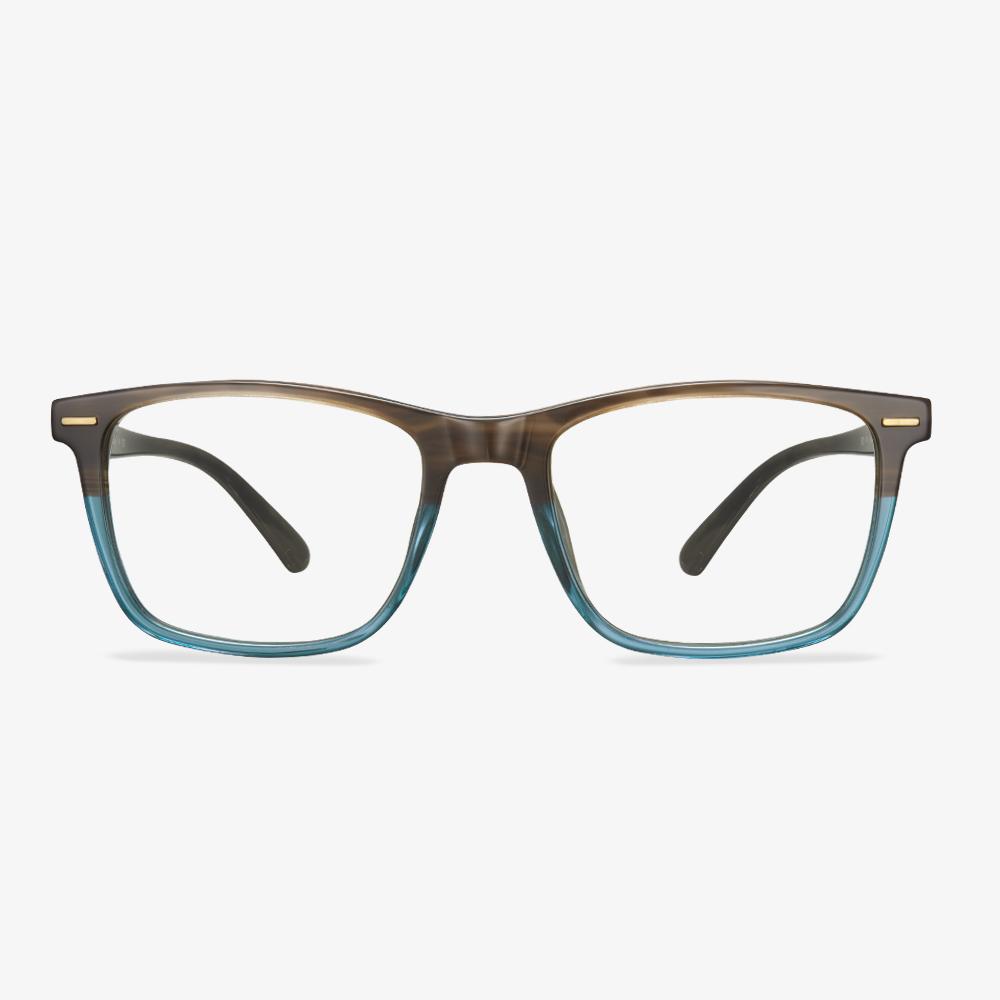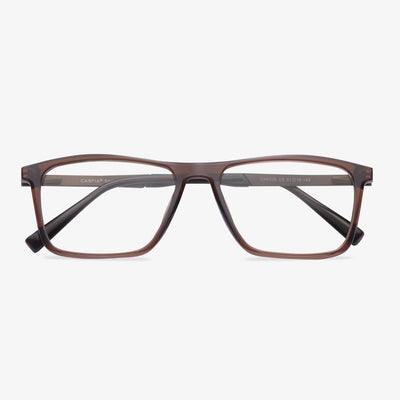The Acetate Spectacle Frame
The sheet spectacle frame is made of a high-tech plastic memory sheet. The current sheet material is mostly acetate fiber, and a few high-end frames are propionate fiber. The acetate fiberboard is divided into injection molding type and pressing and polishing type. The injection molding type is made by pouring in a mold. The plate frame is also suitable for people with a high number of heights because the frame is larger and can withstand a high number of lenses.
How to Tighten Glasses by Yourself
After your glasses being used for a while, they will become loosen. In this situation, you may want to ask for a professional optical person to adjust or tighten it. It would be a way but with some inconvenience. So, you can also choose to tighten glasses by yourself.
Why the glasses will become loose? It can be caused by various reasons. Most people wear and remove their glasses several times every day. The back and forth movements of the glasses’ arms will increase the possibility that they will become loose.
If the glasses become loose, you can choose to tighten them by adjusting the temple arms. Most eyeglasses have a screw located at the temple hinge on both sides. To tighten glasses by yourself, you can choose to tighten this screw to make your glasses more comfortable or prevent them from slipping down your nose again. You had better check these screws periodically so you can tighten them before they fall out.
Shopping Skills of Blue Light Blocking Glasses
Some shop assistants recommend green-blue light-blocking glasses, explaining that the principle of tinting lenses is different and that you should be careful because green can not really block blue rays. There are blue-light-blocking glasses that are blue. And this belongs to blue light protection with no background color, which can not completely prevent blue light into the eye, usually only 20% to 30%.
Men's clear glasses are a fashion item.
A clear glasses frame is not only for a schoolgirl. Clear and transparent design more feel cool and refreshing in scorching summer. At the same time, it will not cover the facial features too much, making the face more delicate and clean. Small pure and fresh picture frames tie in some of the clothes of literature and art naturally. Therefore, the scope of use of clear glasses is very limited, only suitable for fashionable men.
Discoloration time and fading time for color-changing lenses
In general, color-changing lenses take about 30 seconds to 1 minute to darken on average when exposed to sunlight/UV and will continue to darken for about 10 minutes to reach the lens depth of full-color sunglasses. Color-changing lenses of good quality and workmanship are restored to an almost clear and transparent state in 2 minutes and completely cleared in 5 minutes, although the high temperature can affect this. If you want to change a single color change lens, the color of the old and new lenses will be inconsistent. This is because the discoloration performance of the old lens will be reduced due to the long-term use of the discoloration agent. Therefore, in order to ensure the normal use and aesthetic appearance, it is usually recommended to replace the two lenses at the same time.
What is blue light?
Our daily lives are inseparable from mobile phones, computers, tablet computers, and other electronic products. Many people's eyesight is also going downhill due to long-term exposure to strong light electronic screens, and their eyes are more or less potentially adversely affected. It is found that many optical stores sell blue light filter glasses, which have the function of blocking 99.9% UV and scattered blue light, alleviating visual fatigue. They claim that these glasses can block short-wave blue light emitted by electronic products such as mobile phones and computers, and even prevent age-related macular degeneration so they are much sought after by consumers. The price of these so-called anti-blue-light glasses varies greatly, ranging from dozens of dollars to several thousand dollars. Do these blue light blocking glasses really have so many magical functions?
The natural light seen by the human eye is composed of a spectrum of different colors, including red light, orange light, yellow light, green light, blue light, indigo light, purple light, which gives people a visual feeling of white. Different wavelengths present different colors visually, and the shorter the wavelength, the higher the energy. At present, products with electronic screens such as computers and mobile phones use LEDs and other materials to emit light mainly in three colors of red, green, and blue, and blue light accounts for the main part. Blue light belongs to the range of visible light, belongs to short waves. And the wavelength is between 400 nanometers and 500 nanometers, which is close to ultraviolet and carries a large amount of energy. And this part from 400 nanometers to 450 nanometers is called high-energy short-wave blue light.
Which is better, Essilor lens or Zeiss lens?
1. Different high-density resin substrates. Essilor Diamond Crystal series 1.74 lenses use resin with a density of 1.46 as raw materials. The lens itself has higher hardness. Combined with Diamond Crystal series film layers, the lifespan of the lens is better improved. The outstanding abrasion resistance is obvious.
2. Different technical support. The greater the density of the lens, the harder the substrate. However, the larger the density of the lens under the same volume is heavier. Therefore, Zeiss has the best trade-off between density and component and selects high density on the basis of high refractive index and frivolity substrates.
3. Different Features. The anti-fog molecules on the two surfaces of the lens are activated by an anti-fog activator. Therefore, the fog differentiates into a thin layer that is invisible to the eyes, instead of forming a fog. Each spray of activator can last about a week. Zeiss resin lens guarantees up to 99.4% of the lens light transmittance, and the naked eye can no longer feel whether the lens is worn or not.


















































